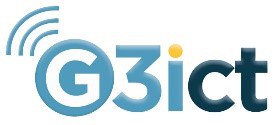Procurement and Closing the Disability Divide in Europe
Posted on December 03, 2022

Vice President, Global Strategy and Development, G3ict
Technology, and more specifically how governments buy and use technology, is key to bridging a significant and persistent “disability divide” across Europe and worldwide. Governments in all countries and at all levels are enormous consumers of technology. When governments procure technology that is not accessible, as defined by global standards like EN 301 549, they create barriers for persons with disabilities to being equal and fully included members of society, including in key areas like education and employment. They are reinforcing the disability divide. Europe has in place key policies and standards to address this disability divide and member states could be using them more effectively and consistently.
Today, there are more than 85 million people with disabilities across Europe. Almost one in five Europeans has a disability and there are many more older persons with age-related impairments that affect how they use technology and participate in society. Most Europeans, 70%, believe better accessibility of products and services would help address the disability divide and improve the lives of people with disabilities. But today governments in Europe may not be consistently buying and using accessible technology. In 2020, G3ict partnered with the European Disability Forum (EDF) to survey disability leaders across Europe. Nearly 80% of these leaders believed the overall accessibility level of the ICT procured by public sector bodies to be low or very low. Less than 4% of those disability leaders surveyed believed their member state national government always selected the most accessible solution in their procurement of ICT.
Since that survey and over the past 2 years, G3ict has partnered with EDF and Microsoft to shine a spotlight on the opportunities for EU member states to use procurement and the EN 301 549 ICT accessibility standard to promote inclusion. Together we have convened 40 leaders and experts from 35 organizations (from industry, government, civil society) in a series of European roundtable discussions. The goal of these discussions has been to understand why governments have not made more considerable progress in procuring accessible technology, the impact on the disability divide and socio-economic outcomes for persons with disabilities, and what we can all be doing together to make more progress.
Several of the roundtable discussions focused on key areas where digital transformation is happening in Europe and where inclusion is critical. Each surfaced important takeaways, including:
Employment
- In Europe, there is a clear difference between employment opportunities for those with disabilities and those without. The employment rate of persons with disabilities remains exceptionally low – just 51% of European persons with disabilities are employed, compared to at least 75% of persons without disabilities.
- The public sector needs to lead by example in employing persons with disabilities, including by taking accessibility into consideration for all digital and services procured for the workplace.
- Improving employment rates of people with disabilities in increasingly digital workplaces requires elevating the importance of ICT accessibility to the same levels of importance as privacy and cybersecurity. As governments procure technology, they need to be thinking about accessibility with the same level of rigor that they do with privacy and security.
Education
- The Covid pandemic accelerated the digital transformation of education. There was a large-scale shift to distance and online learning across the world with 1.6 billion learners in more than 190 countries out of school. The pandemic’s full impact on education systems also brought equity and inclusion dimensions into even more clear focus, including the importance of mainstream education opportunities for learners with disabilities and equal access to curriculum and educational tools.
- A European Commission consultation during the pandemic demonstrated significant challenges with this digital transformation of education, especially when it comes to learners with disabilities. Not all tools and content were usable by all learners. Learners with disabilities faced challenges accessing technology and getting technical support, including from teachers struggling with competence on disability and accessibility.
- As schools and education systems continue to procure and deploy technology, they must consider accessibility of both mainstream and more leading-edge technologies.
Inclusive Covid Recovery
- The European Recovery and Resilience Facility (RRF) is providing to member states more than 600 billion Euros in grants and loans to support their recovery from the Covid global pandemic. The use of these funds must include specific focus on digital transition and to social cohesion – which is encompasses the inclusion and integration of persons with disabilities.
- Member states are creating spending strategies for RRF funds and some (e.g., Italy, Romania, Belgium, Spain, Latvia, Croatia) are using them to address the disability digital divide by focusing on a more inclusive and accessible digital transformation and recovery.
- However, despite broad intentions and general criteria, given the enormous investments in technology resulting from the RRF, it may have missed an opportunity to be even more explicit about accessibility requirements and inclusion of persons with disabilities.
In addition to these thematic digital transformation and procurement discussions, G3ict, EDF, and Microsoft also have hosted country-specific roundtable discussions with leaders and experts from Spain, Sweden, and Austria. These discussions surfaced important and consistent observations, including:
- Dissatisfaction with a lack of progress by member states in making accessibility an explicit requirement in their considerable ICT procurements.
- A desire for national legislation to align more closely with relevant European regulations, including the Convention on the Rights of Persons with Disabilities, the European Procurement Directive, and the European Accessibility Act along with a broader use of existing ICT accessibility standard EN 301 549.
- Calls for steps to support greater progress across member state in the procurement of accessible ICTs, including harmonized procurement platforms and role-based accessibility and disability awareness training for procurement officers and IT staff.
- A broad and deep commitment to work collaboratively to make more progress moving forward.
Moving Forward
There is both an opportunity and legal imperative to use standards and procurement to address the entrenched digital inclusion challenges facing persons with disabilities across Europe. The 2019 European Accessibility Act (EAA) complements existing obligations for accessibility in public procurement by laying out a set of accessibility requirements for a broad list of ICT products and services. However, to date, relatively few member states have met a deadline earlier this year to transpose the EAA into their national law.
But we now have an opportunity to redouble efforts both on the transposition of the EAA as well as to use the remaining 3 years of the transition period, until 2025, to ensure that governments, industry, and civil society organizations are ready for its full implementation. G3ict is committed to continuing to partner with EDF, Microsoft, and all other organizations interested in ensuring that governments use their technology investments to close the disability divide. For more information, contact [email protected]





























